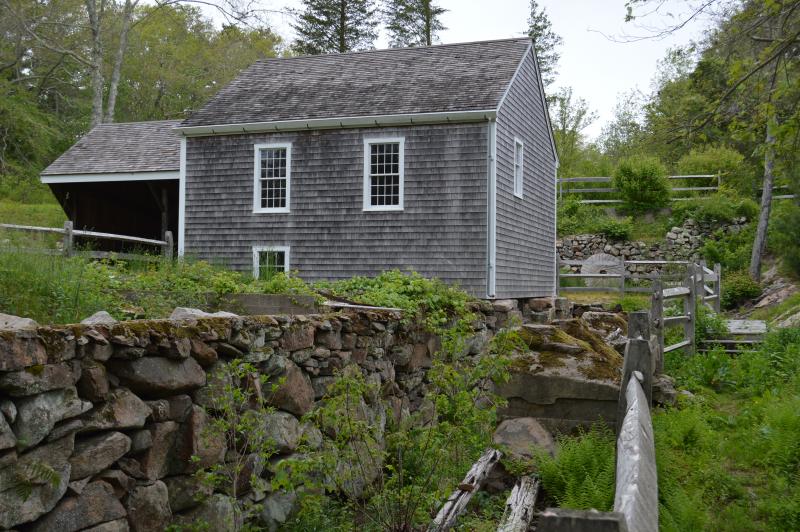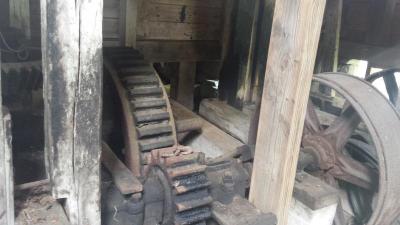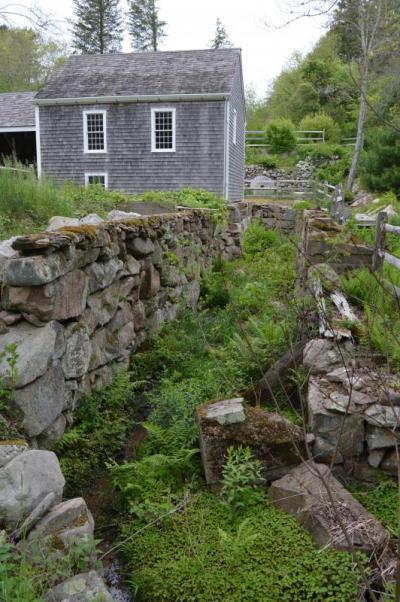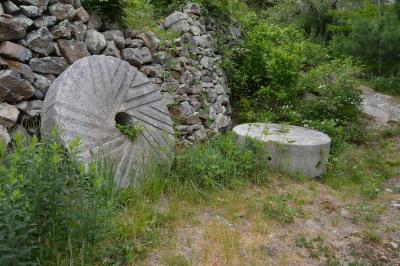Dartmouth Natural Resources Trust offers tour through nature, history
Destruction Brook Woods, a 280-acre property in North Dartmouth, was alive with activity this weekend, as staffers from the Dartmouth Natural Resources Trust (DNRT) gave residents a chance to explore nature and the past.
A guided walk through the woods and tours of the nearby historic mill were available on Sept. 12 as part of the Dartmouth Grange Rural Community Fair.
Allen’s Mill has been located at the site since 1711 and mill operations occurred at the location until the 1950s. The mill has lived through frequent fires and has been rebuilt and rearranged numerous times.
According to Jim Bride, development and outreach coordinator for the trust, the mill was purchased by the Dartmouth Natural Resources Trust as part of its Destruction Brook Woods acquisition in 2000, and the mill was restored soon after.
Andy Brunes, who had been a member of the DNRT for years, gave a brief background of the mill and an overview of the mechanics behind it.
“Dartmouth was well-known for its mills,” said Brunes. “Russells Mills had seven to eight mills at one point, and Dartmouth had 27 to 28 mills overall.”
When the DNRT first acquired the mill, Brunes described it as a “massive jungle of bittersweet.”
The mill was overgrown and, according to Brunes, the group wouldn't have been able to restore the mill without the Community Preservation Committee.
“This is where the beginnings of the industrial revolution took place,” said Brunes. “This was the industrialized hub because of all the mills. Then it moved to Fall River and New Bedford where you started to see larger mills.”
Back when the group was still acquiring the mill, residents had begun to donate artifacts.
“Louise Strongman’s family, after she passed, donated the landscape stones,” said Brunes. “It was very generous.”
The DNRT hosts two to three open houses a year Allen's Mill.
“We always envisioned opening up more,” said Brunes, “but you need to have a significant amount of volunteers and help.”
The DNRT has not achieved the goal of having water power return to the mill. Even so, the group remains optimistic.
“We’ve stabilized our vision,” said Brunes. “It’s grander than it is today.”
Meanwhile, in the surrounding woodland area, Dartmouth Natural Resources Trust Land Stewardship Assistant Kate Losey lead a group through Destruction Brooks Woods. The 10 hikers explored the lesser-known “Happy Valley” area just west of Fisher Road.
Susan Gorman, a member of the DNRT, has also visited Allens Mill Reserve, the Cornell Farm Reserve and the Parsons Field Reserve in Dartmouth.
“I think the scenery is beautiful,” said Gorman.
The DNRT is a non-profit, accredited land trust. With the support from the members, donations, and grants, they have helped protect more than 5,000 acres of land and maintain more than 35 miles of hiking trails.
Along the path, Losey pointed out fresh blueberries, and the youngest members of the group hurried to taste them. She also found a less appetizing gelatinous fungus. Losey gave some advice to the group: “You can touch it, but don’t lick your fingers.”
The Destruction Brook Woods Reserve includes miles of walking trails, woodlands that include American Beech, Iron Wood and Atlantic White Cedar, and unusual rock ledges covered with various ferns and lichens.
“I liked the learning experience,” said Lynne Berard. “The trail is beautiful to walk during any season.”


















